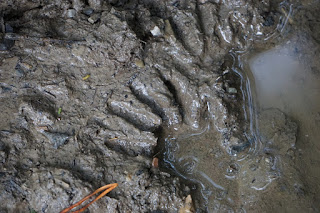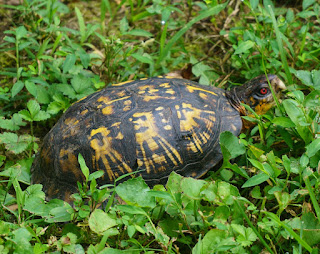This turtle had buried himself partially at the edge of the puddle. He still had mud on top of his shell when I took this photo.
I washed the mud off to get a good photo of the shell patterns, the way to identify this individual. Also, I estimate his length to be only about 4-4.5 inches. I put him to the side of the driveway and found a few blackberries to feed him.
My husband set up this warning flag so we would remember to stop and move the turtle to the side when we drove out or when returning home.
The second morning my husband found the turtle upside down and these tracks right next to him. Even though box turtles can right themselves if turned upside down, this one was stuck to the mud so my husband put him upright. I think the tracks are from a raccoon who tried to eat the turtle without success.
Today, the turtle was still in the puddle so we will keep looking out for him.














